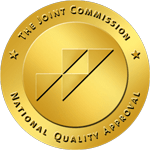Table of Contents
In treating patients with borderline personality disorders and suicidal ideation, Dr. Marsha M. Linehan identified the need for a therapy program that went beyond Cognitive Behavioral Therapy (CBT). As a result, she developed the complex subset of CBT known as Dialectical Behavior Therapy (DBT), a technique that addresses the contrariness of severe mental health concerns.
Explaining Dialectical Behavior Therapy
The definition of “dialectical” helps explain DBT. Dialectical is a “logical discussion of ideas and opinions, concerned with or acting through opposing forces.” In the mental health setting, DBT attempts to make positive changes through the revelations exposed through questions and conflict.
DBT tends to be more “present-focused” rather than discussing the past. What is happening right now that is causing distress? DBT also tends to be more educational for the client, helping them to learn new coping skills that can assist with daily navigation of life, which may include:
- Mindfulness
- Distress tolerance
- Interpersonal effectiveness
- Emotional regulation
Dialectical Behavior Therapy Techniques
While DBT is a specialty that requires advanced training for the mental health professional, it is not a rigid treatment program. As with all successful mental health programs, Dialectical Behavior Therapy techniques are flexible and customizable.
A DBT-certified therapist will use a combination of techniques such as:
- Individual therapy
- Group therapy
- Stress management
- Mindfulness/meditation
- Specialized therapies: equine, art, music, movement, dance, gardening, etc.
The Therapeutic Alliance
A trusting partnership between mental health professionals and patients is the basis of successful treatment, but this therapeutic alliance also incorporates other members of the recovery process, like loved ones, co-workers, and other health professionals.
Reach the Summit
The treatment services at Summit Malibu are a manifestation of the therapeutic alliance needed for successful and holistic therapy. You can contact us anytime, 24/7, for more information about our program, our facilities, our amenities and team, and much more.




